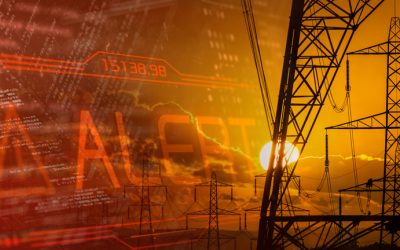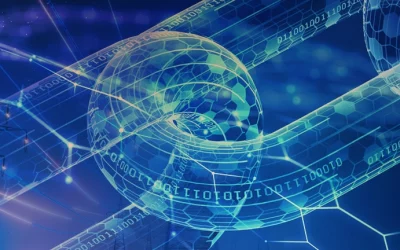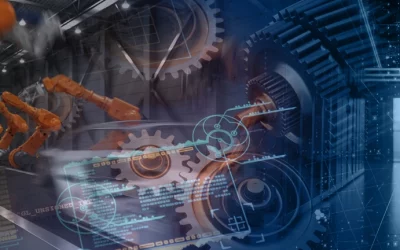People, Data and Devices:
The Digitalisation Journey of UK Rail Networks
The UK’s rail networks are going through a digital revolution: the biggest transformational change in 100 years. Legacy infrastructure now gives way to leading-edge smart technologies, which are being deployed across every aspect of the rail experience. With the 2021 Williams Schapps Review – Plan for Rail setting out clear recommendations for more reliable, sustainable, and easy-to-use rail services, and bringing together the entirety of the UK rail industry, ending “years of fragmentation, confusion and overcomplication”.
However, this is a time of uncertainty, where rail operators are working hard to encourage more people back to travelling by train in the aftermath of COVID-19. When we also consider the changing political landscape and the implications this may have for Great British railways, it’s important to ensure the challenges that rail operators are now facing are not underestimated as the drive to implement leading-edge technologies continues to build speed.
And all the while, the passenger experience must remain at the centre of everything.
Intelligent Infrastructure: defining a new breed of cyber security
The digitalisation of Britain’s railways encompasses many factors, including Big Data; automated trains; intelligent traffic management and train control systems; cloud-based infrastructure, signalling and telecoms; communications; and digital twins. These different elements must be underpinned by highly secure, resilient infrastructure, connecting everything from the very smallest assets at the edge of the network, to the trains and tracks themselves. To this end, technologies such as Software-Defined WAN (SD-WAN) are becoming increasingly widely adopted, ensuring that a seamless flow of data can be maintained, and that drivers, passengers, and rail staff can access the applications they require from anywhere, all while optimising cost control and scalability.
In an increasingly turbulent geopolitical landscape, cyber-attacks on the UK’s critical national infrastructure are now an unfortunate reality. Cyber security is a critical priority, particularly when we consider that other countries have already experienced attacks on their railway networks, such as the ransomware attack on Italian State Railways in March 2022. With the increasing deployment of smarter technologies and the interconnection of previously siloed systems creating a wide range of new attack vectors, a new breed of cyber security is required: one that takes into account the rail sector’s compliance obligations as an Operator of Essential Services (OES), and ensures elements such as passenger WiFi, CCTV, and ticketing systems cannot be used to compromise the safety and integrity of the nation’s railway networks.
Fortunately, there is much to be learned from other sectors’ digital journeys – particularly those delivering critical national services. For example, the utilities sector has successfully implemented highly secure connections between sites ranging from offshore windfarms to factories and public spaces. The innovations already achieved in these projects demonstrate the full potential of smart technology and fully interconnected systems. At the same time, the NIST Cybersecurity Framework (NIST CSF) offers a proven model for risk management and securing critical infrastructure.
A technological foundation for exceptional passenger experiences
This accelerated digitalisation journey not only streamlines processes and makes operational efficiencies, but also sets a new standard for the most important aspect of delivering public transport services: the passenger experience. If operators are to futureproof rail and make it a viable mode of transport for decades to come, each journey – whether it’s the morning commute or a weekend trip away – must be seamless, from the initial booking to the point of arrival. Interconnected systems offer a rich vein of possibilities, utilising passengers’ data with real-time network performance, to streamline the booking process and offer live data updates on the customers’ journeys.
Rail network operators and their technology providers must ensure this goal remains at the forefront of any digital transformation initiatives in the years ahead, designing and developing systems that bring people, data, and devices together. This is certain to be an ongoing journey, as the political environment, the digital landscape, and passengers’ preferences and requirements continue to evolve.
As the digitalisation of networks continues to pick up speed, operators find themselves with a unique opportunity to develop more sustainable, more secure, and more reliable rail services, with ample scope to build on these innovations in the future.
First published on techUK as part of Innovation in Rail Week 2022.
A recent high-profile breach has driven home the need for a new model of OT security
Considering the impact of the recent Volt Typhoon incident and what can be done to optimise the security and resilience of CNI
Secure by design’ must become the new norm for mission-critical infrastructure
Cyber security is a priority as threats grow in frequency, scale, and sophistication. For Operators of Essential Services (OESs), IT/OT convergence and complex compliance demands require a more integrated, ‘secure by design’ approach.
A new model of high-resilience data hosting for tomorrow’s interconnected manufacturing
With manufacturing now officially part of the UK’s CNI sector, what steps can organisations take to bring their operations in line with CNI rigorous standards of security and resilience?
Contact us...
Schedule a Consultation
Contact Vysiion today to discuss your CNI technology needs.



